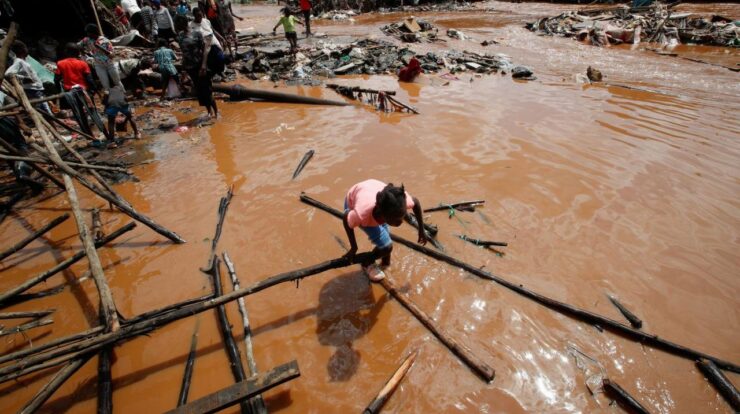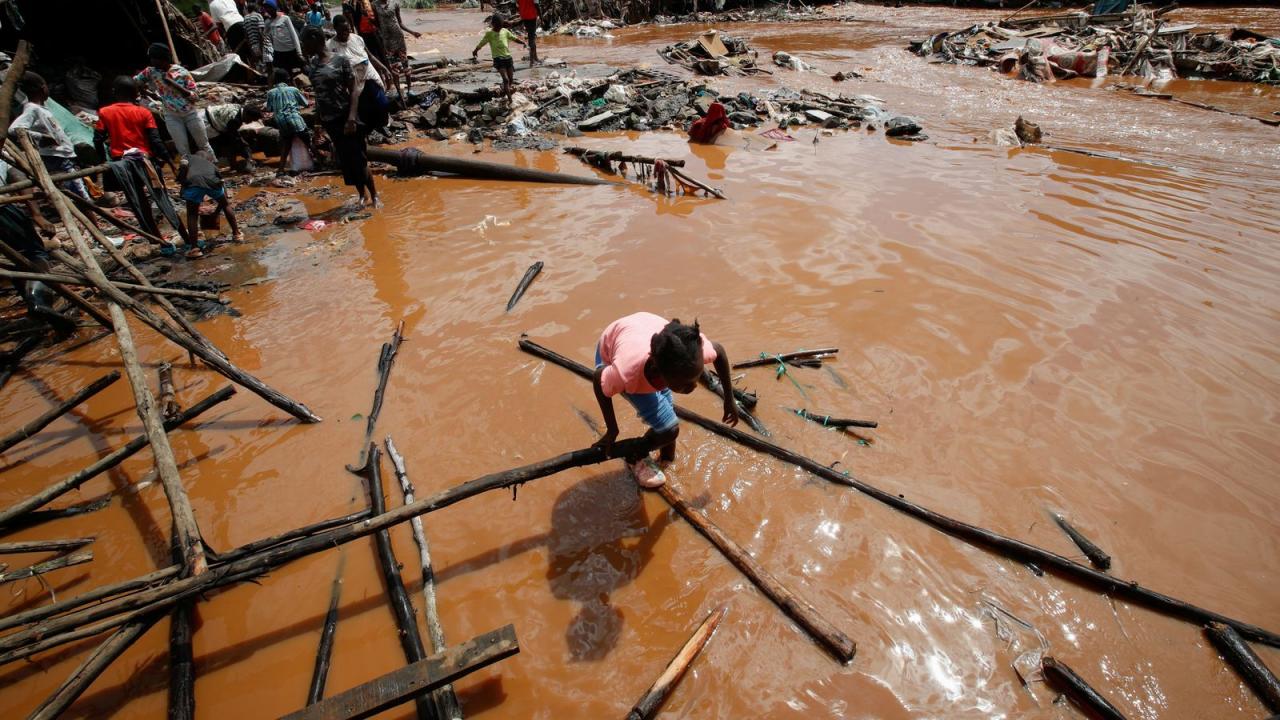
Kenya nairobi flooding – Kenya’s capital, Nairobi, has been grappling with severe flooding, leaving a trail of destruction and displacing thousands. Heavy rainfall, coupled with poor drainage and rapid urbanization, has turned the city’s streets into raging rivers, causing widespread damage to infrastructure and disrupting essential services.
The extent of the flooding is staggering, affecting vast swathes of the city and leaving many residents stranded. The relentless downpour has inundated roads, bridges, and buildings, cutting off access to essential services such as electricity, water supply, and transportation.
Flooding Situation in Nairobi, Kenya: Kenya Nairobi Flooding

Nairobi, the capital of Kenya, has been experiencing severe flooding in recent weeks, causing widespread damage and disruption. The flooding has affected numerous neighborhoods, displacing thousands of residents and causing significant economic losses.
The flooding is primarily attributed to heavy rainfall, poor drainage systems, and rapid urbanization. The city’s drainage infrastructure has been overwhelmed by the heavy downpours, leading to widespread flooding in low-lying areas.
Impact of Flooding on Nairobi’s Infrastructure
The flooding has caused extensive damage to Nairobi’s infrastructure. Roads and bridges have been washed away, cutting off access to essential services and businesses. Buildings have been inundated, resulting in structural damage and loss of property.
The flooding has also disrupted essential services, including electricity, water supply, and transportation. Many areas of the city have been without power and water for days, while public transportation has been severely affected.
Humanitarian Response to the Flooding
Numerous humanitarian organizations have mobilized to provide aid to flood victims in Nairobi. These organizations are providing food, shelter, and medical care to those affected by the flooding.
However, the humanitarian response has been hampered by the scale of the flooding and the challenges of accessing affected areas. Many roads and bridges have been damaged, making it difficult to deliver aid to those in need.
Long-Term Solutions to Flooding in Nairobi, Kenya nairobi flooding
To mitigate the risk of future flooding in Nairobi, several long-term solutions need to be implemented. These include improving drainage systems, installing flood warning systems, and promoting urban planning that reduces flood risk.
Improving drainage systems is crucial to ensure that rainwater can be effectively channeled away from populated areas. Flood warning systems can provide early alerts to residents, allowing them to evacuate to safety.
Summary

As the floodwaters recede, the true extent of the devastation becomes apparent. The city’s infrastructure has suffered significant damage, with roads washed away, bridges collapsed, and buildings left in ruins. The economic losses incurred by businesses and residents are expected to be substantial.
The humanitarian response to the flooding has been swift, with aid organizations providing food, shelter, and medical care to those affected. However, challenges remain in delivering aid to the most vulnerable, as floodwaters continue to hamper access to certain areas.
Commonly Asked Questions
What caused the flooding in Nairobi?
The flooding was caused by a combination of factors, including heavy rainfall, poor drainage systems, and rapid urbanization.
What are the long-term solutions to flooding in Nairobi?
Long-term solutions to flooding in Nairobi include improving drainage systems, implementing flood warning systems, and promoting urban planning that takes into account flood risks.
How can the community help prevent flooding in Nairobi?
The community can help prevent flooding by reducing litter and debris that can clog drainage systems, planting trees to absorb rainwater, and participating in flood preparedness programs.






